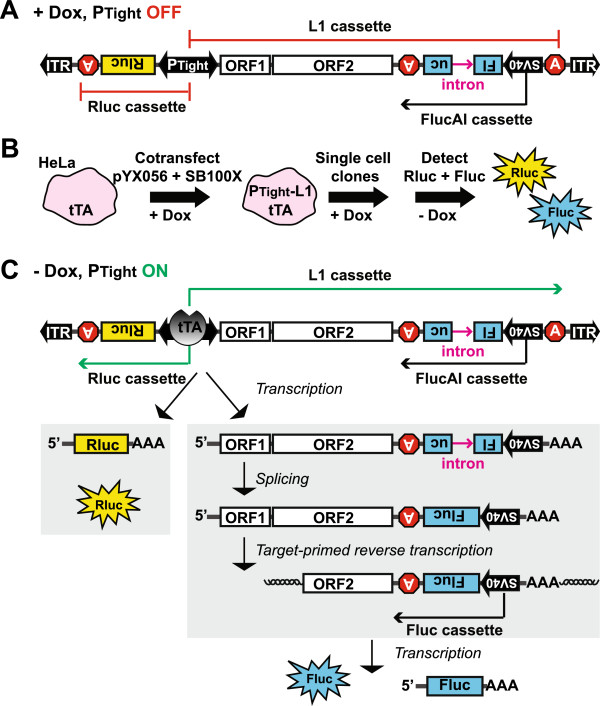Figure 1.
L1 retrotransposition in a HeLa Tet-ORFeus stable cell line. (A) A schematic of the bi-directional inducible L1 construct. The bi-directional tet-responsive promoter PTight drives the expression of an upstream Rluc cassette and a downstream L1 cassette. The L1 cassette features coding sequences (that is, ORF1 and ORF2) from the synthetic L1 ORFeus and an antisense-stranded FlucAI reporter cassette [11]. In the presence of doxycycline, PTight is inactive. FlucAI can be transcribed from its own SV40 promoter. However, no Fluc activity is expected because Fluc coding sequence is interrupted by an antisense intron (sense relative to the L1 cassette). (B) Incorporation of the L1 construct into HeLa-tTA cells. The L1 construct is terminally flanked by ITRs of the Sleeping Beauty DNA transposon (see panel A). To make a stable cell line, the L1 construct was co-transfected with SB100X into HeLa-tTA cells. Single cell clones were established through limiting dilution in the presence of doxycycline. Rluc and Fluc were measured after doxycycline withdrawal. (C) The rationale of L1 retrotransposition assay with Tet-ORFeus cells. In the absence of doxycycline, PTight is bound by tTA and activates the transcription of a Rluc mRNA and an L1 pre-mRNA. The intron is removed from L1 pre-mRNA through splicing. The mature L1 mRNA is reverse transcribed and integrated into the genome (shown as a 5′ truncated insertion), forming a functional Fluc cassette.

